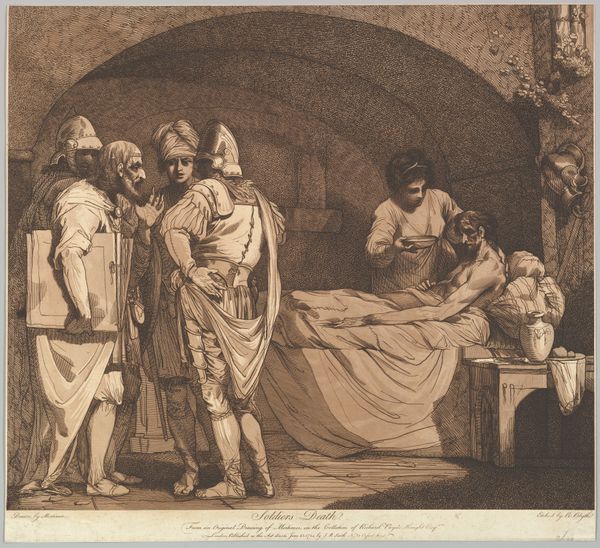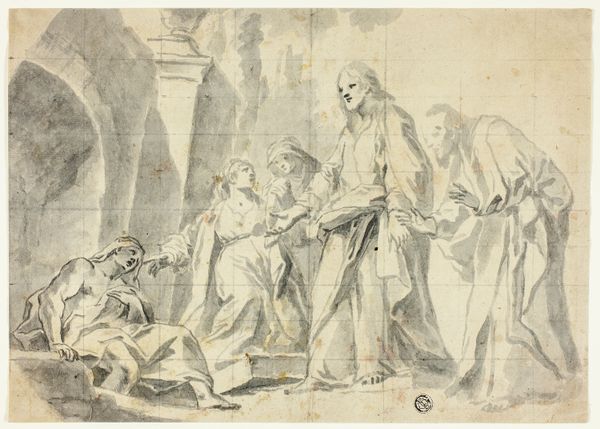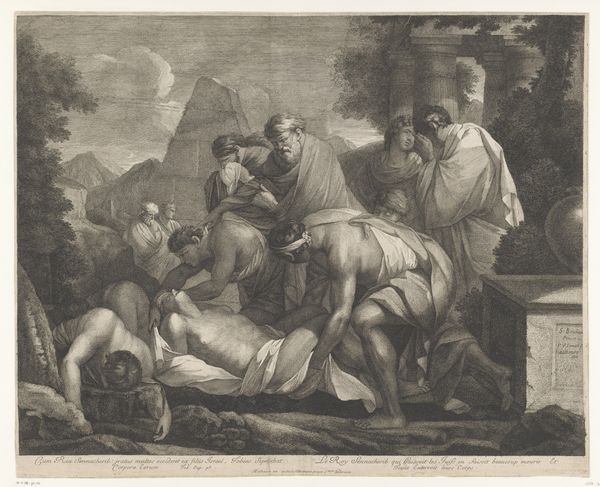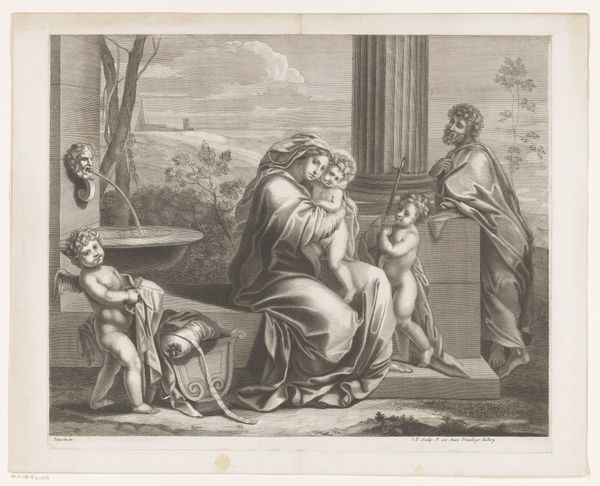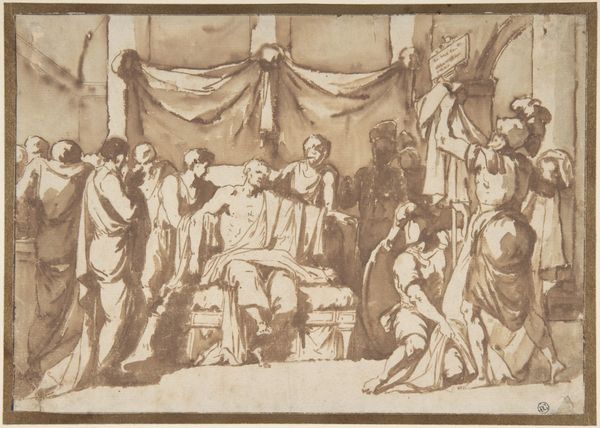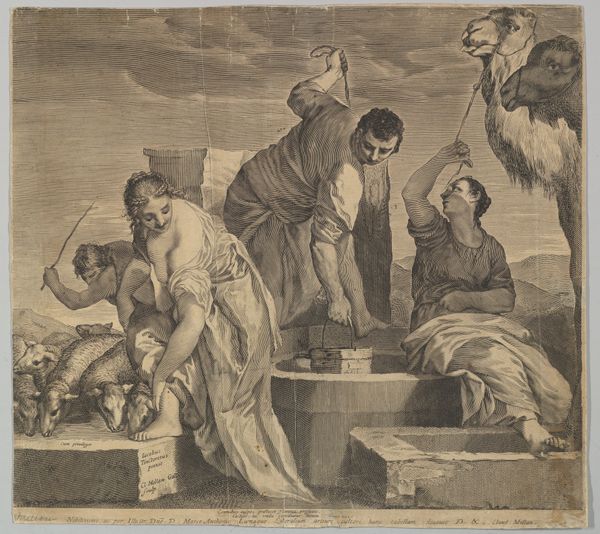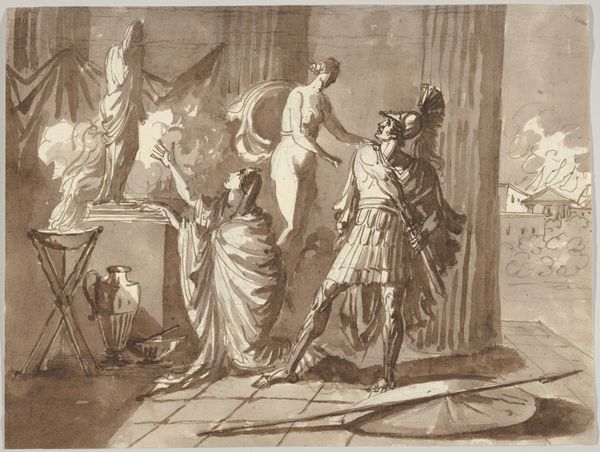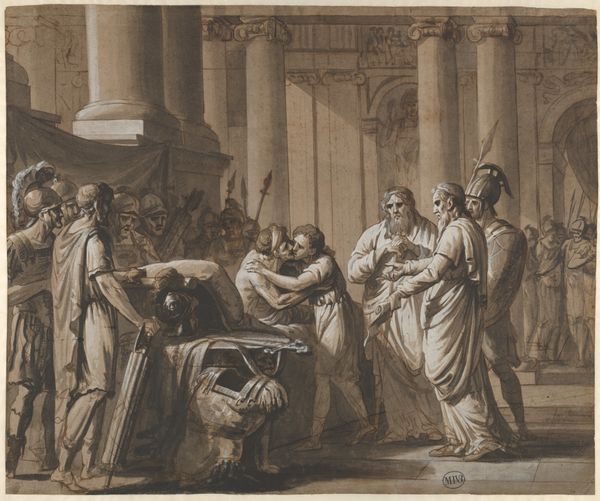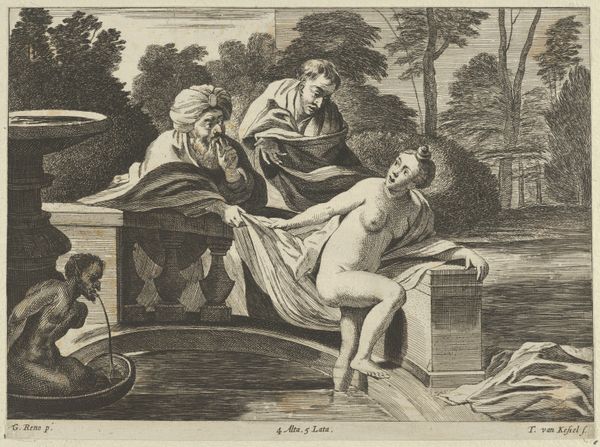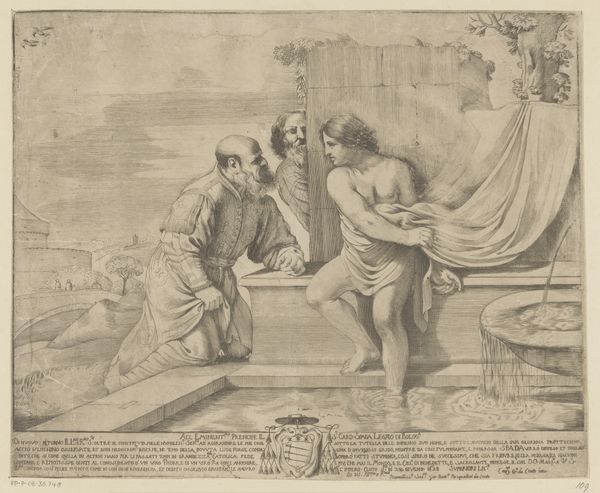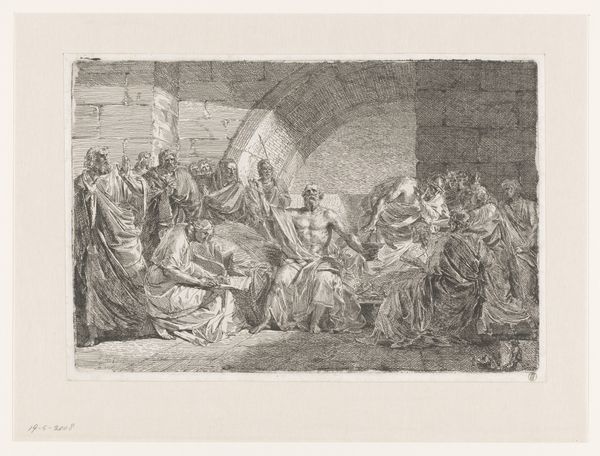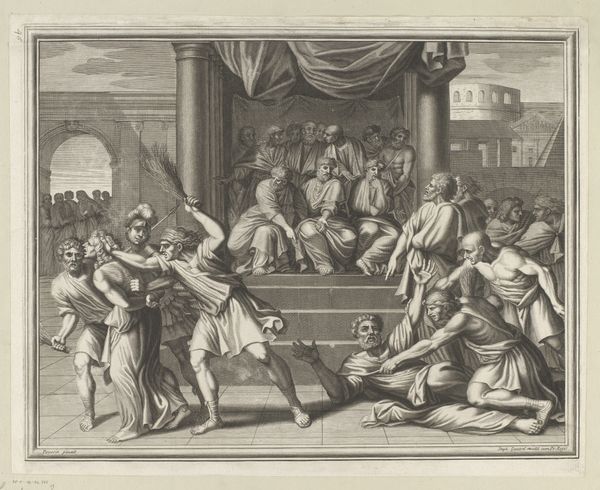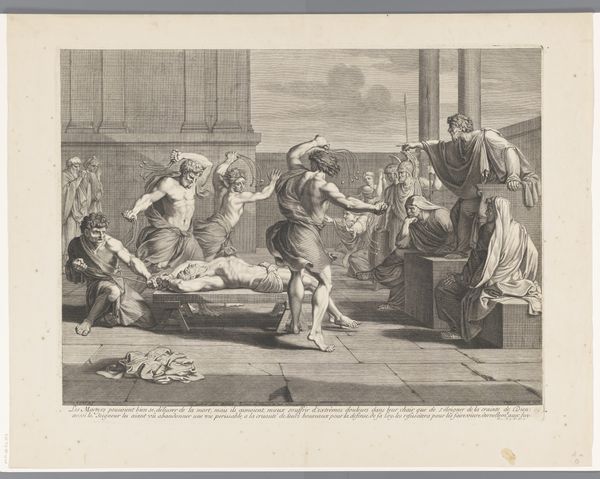
drawing, print
#
drawing
#
neoclacissism
# print
#
figuration
#
line
#
history-painting
#
academic-art
Dimensions: Sheet: 9 5/8 × 14 7/8 in. (24.4 × 37.8 cm)
Copyright: Public Domain
Jacques Louis David captured this scene of Socrates's death on paper with pen and gray ink. The raised finger of Socrates, a symbol of teaching, morality, and truth, contrasts starkly with the cup of hemlock, an instrument of death and injustice. This motif of the raised hand appears throughout history—in religious art as a sign of blessing or divine pronouncement, and in secular contexts as a symbol of leadership or revolution. Think, for example, of John the Baptist or depictions of Roman emperors addressing their troops. Here, it’s not a call to arms but an affirmation of his philosophical convictions. The emotional weight of this gesture is powerful, engaging viewers on a subconscious level. It speaks to the enduring human quest for truth and the willingness to stand by one's beliefs, even in the face of death. This interplay between knowledge and mortality, embodied in the raised finger and the poison, is a timeless dance. It resurfaces in different forms throughout history, adapting to new cultural landscapes, yet always echoing the fundamental human struggle between intellect and mortality.
Comments
No comments
Be the first to comment and join the conversation on the ultimate creative platform.
